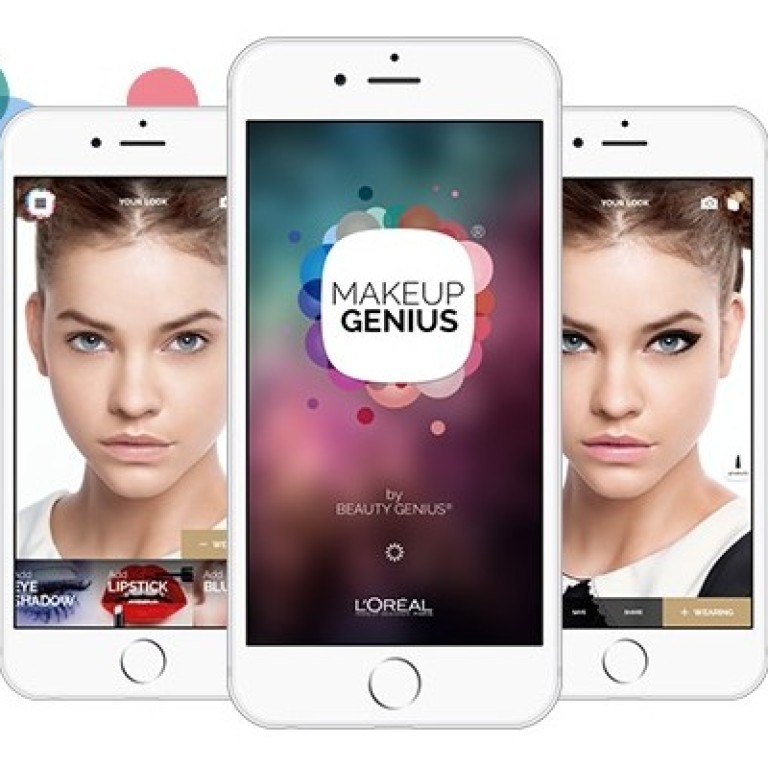
Connected beauty gets a digital makeover: latest apps and gadgets to keep you looking good
From an augmented reality app that allows you to apply cosmetics virtually, to a smart hairbrush that provides feedback on your hair care, brands have been ramping up their beauty offerings in the digital sphere
Mirror, mirror, on the wall – who is the fairest of them all? Connected beauty tech can give you the lowdown, and if you don’t like what you see, or hear, it’s likely there’s an app for that as well.
With 4 billion queries annually, according to L’Oréal’s estimation, beauty is one of the most searched terms on the internet today. So it’s not surprising that the French luxury cosmetics brand has ramped up its digital strategy, with the 2014 launch – and subsequent upgrade – of an augmented reality app, Makeup Genius.
As of March 2016, almost 20 million users worldwide had downloaded the app which lets them virtually apply products and experiment with looks before deciding which items to buy.
Now improved with even more advanced augmented reality technology, the app will drive “stunningly real” experiences to “help every woman to be and feel more beautiful”, according to Ron Ryder, CEO of Image Metrics, L’Oreal Paris’ partner company in the venture.
Beyond mere good looks, today’s gadgets can also empower the connected consumer to self-diagnose beauty issues, and respond accordingly to correct imperfections.

In January, Samsung Electronics unveiled two products: its S-Skin, a home skincare and analysis solution designed to reduce the time and cost associated with professional dermatological care; and Lumini, a portable device that checks the inner skin to identify and prevent skin problems.
S-Skin, the brand explains, involves using a microneedle patch applied to measure the hydration, redness, and melanin of the skin, and provide customised skincare via an LED light. The condition of the skin is saved in the accompanying app to track changes over time.

With Lumini, users take a selfie of their face, which the device analyses using its own algorithm and sends the information to a smartphone app. Even issues under the skin – like pimples – are identified. Lumini also recommends cosmetic products based on the analysis, and provides a remote consulting service with a dermatologist or a skincare specialist.

Hair care brand Kérastase has also entered the connected beauty fray with a product billed as the first ever smart hairbrush.
The Kérastase Hair Coach Powered by Withings – launched in January at CES 2017 – is designed to minimise the damage of split ends and breakage associated with forceful hair brushing. Multiple sensors embedded in the brush feed data via Wi-fi or Bluetooth to a dedicated app which provides information on the quality of hair and brushing patterns, taking into account weather factors such as humidity, temperature, UV and wind. The hairbrush is a three-way collaboration between Kérastase, Withings and L’Oréal’s Research and Innovation Technology Incubator.

With all the health warnings around excessive sun exposure, another device has been developed to take the guesswork out of knowing when to apply more sunscreen. The La Roche-Posay My UV Patch – from L’Oréal Group’s dermatological skincare brand – is made of five layers of complex materials complete with a high-tech sensor and photosensitive dyes. Despite its high-tech complexity, the patch is thin, stretchy and comfortable to wear, so it doesn’t interfere with normal outdoor activity.
The patch is scanned by a companion smartphone app to determine the wearer’s daily sun exposure, taking account of personal details like hair and skin colour. Based on that data, advice is then given on personal UV protection recommendations, and tips for safe sun behaviour.
These products are merely trailblazers on a connected beauty scene tipped to explode over the coming years. With the internet of things projected to spread to 200 billion devices worldwide by 2020, according to Intel, it’s natural that the lucrative beauty market is ripe for a hi-tech makeover.

